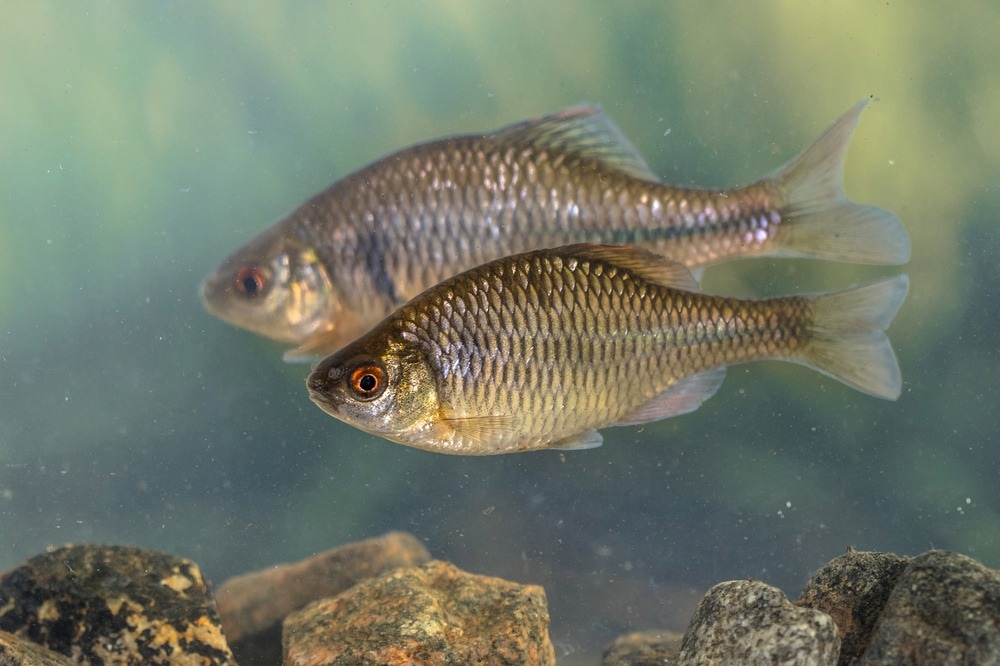Alteration in river systems, overfishing, and the introduction of new, invasive species can all lead to a significant decrease in the number of native fish found in aquatic ecosystems. The bitterling fish (Rhodeus atremius suigensis), which was earlier abundant in the Ashida river basin in Japan, is now experiencing local extinction.

Image Credit: Rudmer Zwerver/Shutterstock.com
This is alarming because it is recognized as an indicator species for the conservation of freshwater fish diversity. Conservation efforts to protect native aquatic fauna necessitate large-scale field studies to better comprehend the habitat requirements and population density of various species. This is a difficult task that will take a significant amount of time and effort.
To overcome this barrier, scientists typically concentrate on small areas and identify the DNA discarded by living organisms into their surroundings. This environmental DNA (or eDNA) can be evaluated in a non-invasive and time-efficient way to recognize species that have recently visited the area.
Researchers from Okayama University in Japan recently used eDNA to assess the presence, distribution, and population density of R. a. suigensis in the Ashida river basin in Fukuyama, Japan. They used the polymerase chain reaction (PCR) technique to perform semi-quantitative eDNA analysis.
Researchers created DNA primers that identified a stretch of R. a. suigensis mitochondrial DNA, making their analysis highly specific to this species. On November 23rd, 2022, their findings were published in the Journal of Landscape and Ecological Engineering.
We first confirmed the utility of this analysis in aquarium experiments, before performing field surveys. We set fish traps at 48 points in an agricultural channel in the Ashida river basin and examined the relationship between fish presence and eDNA concentration.”
Kazuyoshi Nakata, Professor, Okayama University
Ms Kanoko Otsuki, Dr Mayuko Hamada, and Prof. Tatsuya Sakamoto from Okayama University, as well as Dr Noriyuki Koizumi from the National Agriculture and Food Research Organization, were also members of the research team.
The scientists discovered that eDNA concentrations fluctuate with downstream channel distance from the point where R. a. suigensis specimens were captured—the greater the distance, the lower the eDNA concentration.
Our results serve as a reference to how far and how much downstream eDNA can be detected, which will be useful to guide future conservation surveys.”
Kazuyoshi Nakata, Professor, Okayama University
As a result, the investigators were able to confirm that the eDNA concentrations were reflective of the distribution and abundance of R. a. suigensis. Because this technique only needs water sampling in the field, even local residents can assist with ecological surveys. The information gathered from these surveys can be used to design suitable conservation strategies in the future.
This method is highly scalable and can be applied to larger areas. This technique can also be altered to survey other endangered species with the advancement of corresponding molecular tools, like specific primers. This will not only aid in the conservation of endangered species but will also contribute significantly to raising awareness about the importance of biodiversity conservation through the involvement of local communities.
Source:
Journal reference:
Otsuki, K., et al. (2023) Quantitative PCR method to detect an extremely endangered bitterling fish (Rhodeus atremius suigensis) using environmental DNA. Landscape and Ecological Engineering. doi.org/10.1007/s11355-022-00531-9